5 Interpersonal Strategies for Nurses to Enhance Patient Care and Team Collaboration
Nurses who want their communication with patients to enhance their interactions and ensure clarity, empathy, and effectiveness are leading the way in healthcare. In the complex environment of healthcare settings, effective communication is essential not only for delivering high-quality care but also for building trust and rapport with patients. Clear, compassionate communication helps patients feel heard and understood, which can significantly impact their satisfaction, adherence to treatment plans, and overall health outcomes.
Effective communication is a cornerstone of healthcare, enabling healthcare professionals to exchange critical information accurately and efficiently. It fosters collaboration among healthcare teams and supports patient-centered care by ensuring that patients are actively involved in treatment decisions. In busy clinical settings, nurses face the challenge of balancing technical tasks with meaningful communication, which requires skill, patience, and cultural sensitivity.
However, nurses frequently encounter challenges such as addressing patient anxiety, managing diverse cultural backgrounds, and coordinating with multidisciplinary teams. These barriers can impede the flow of information and affect the quality of care delivered. Recognizing these challenges, this article aims to address common questions and obstacles nurses face in healthcare communication. It offers practical strategies and insights to improve interactions with patients and healthcare teams.
By strengthening communication skills, nurses can contribute to better patient satisfaction, enhanced teamwork, and ultimately, improved quality of care. Good communication helps enforce positive moods with the following effective communication techniques, team communication strategies, and methods for feedback and continuous improvement in mind. Let’s address common challenges and provide actionable insights to enhance different types of communication skills, ultimately improving patient outcomes and satisfaction.
Effective Communication Techniques
How can I improve communication with patients who are anxious or upset?
To improve communication with patients who are anxious or upset, focus on creating a calm and supportive environment. Here are some practical tips:
- Stay Calm and Patient: Your calm demeanor can help soothe anxious patients. Speak slowly and gently.
- Acknowledge Their Feelings: Let patients know it’s okay to feel anxious or upset. Simple phrases like “I can see this is difficult for you” can validate their emotions.
- Offer Reassurance: Provide comfort by explaining what you are doing or what will happen next, which can reduce uncertainty.
- Be Present: Sometimes just being there quietly with a patient can help them feel supported.
- Encourage Questions: Invite patients to ask questions or express concerns, making them feel involved and heard.
By focusing on empathy, patience, and clear communication, you can help anxious or upset patients feel more at ease and supported during their care experience.
What are the best practices for active listening in health care?
Give the patient your full attention. Maintain eye contact, nod occasionally, and avoid interrupting. This shows you care and are truly listening. Active listening also involves observing nonverbal cues such as facial expressions, body language, and tone of voice, which can provide additional insight into the patient’s feelings and concerns. Reflecting back what the patient has said by summarizing or paraphrasing helps confirm understanding and encourages further sharing. Asking open-ended questions invites patients to express themselves more fully, fostering a deeper connection and trust. Additionally, being mindful of cultural differences and individual communication preferences enhances the effectiveness of active listening. By practicing these techniques, healthcare providers can build stronger relationships with patients, improve patient satisfaction, and support better health outcomes.
How do I ensure patients understand their care plans?
Avoid medical jargon. Explain things in everyday words so they feel more comfortable and understand better. Use simple language and analogies that relate to their daily lives to make complex medical concepts easier to grasp. Visual aids, such as diagrams or pictures, can also help clarify information and reinforce understanding. Encourage patients to ask questions and repeat back the information in their own words to confirm comprehension. Additionally, provide written materials or summaries they can take home for reference. Tailoring explanations to the patient’s cultural background, language proficiency, and health literacy level is essential to ensure effective communication. By taking these steps, you empower patients to actively participate in their care, leading to better adherence to treatment plans and improved health outcomes.
Elite Nurse Team Communication for Patient Care
How do I ensure seamless communication between the care team and the patient?
Ensuring seamless communication between the care team and the patient is vital for delivering coordinated, high-quality healthcare. Clear, consistent communication helps prevent errors, builds patient trust, and enhances overall satisfaction. To achieve this, it is important to establish open channels where information flows freely among all parties involved.
Key strategies include:
- Use Structured Communication Tools: Implement standardized frameworks like SBAR (Situation, Background, Assessment, Recommendation) to ensure that critical information is conveyed clearly and consistently during interactions.
- Maintain Regular Updates: Keep patients informed about their care plans, progress, and any changes. Regular updates reduce anxiety and empower patients to participate actively in their treatment.
- Encourage Questions and Clarifications: Create an environment where patients feel comfortable asking questions or expressing concerns, which helps clarify misunderstandings and promotes shared decision-making.
- Coordinate Among Team Members: Facilitate regular interdisciplinary meetings or huddles to discuss patient status and align on care objectives, ensuring everyone is on the same page.
- Leverage Technology: Utilize electronic health records (EHRs) and patient portals to share accurate, timely information with both the care team and patients, enhancing transparency and accessibility.
By prioritizing these approaches, healthcare providers can bridge communication gaps, foster collaboration, and support patient-centered care.

What are the best practices for handoff communication in healthcare settings?
Effective handoff communication is essential to ensure continuity of care and patient safety during transitions between healthcare providers or shifts. Poor handoffs can lead to information loss, medical errors, and compromised treatment outcomes. Adopting best practices minimizes these risks and supports smooth care delivery with a more complete picture.
Best practices include:
- Standardize the Process: Use structured handoff protocols such as SBAR or I-PASS to organize information and reduce omissions.
- Provide Complete and Relevant Information: Share critical details about the patient’s condition, treatment plan, medications, allergies, and any recent changes or concerns.
- Engage in Face-to-Face or Verbal Communication: Whenever possible, conduct handoffs in person or via live conversations to allow for questions, clarifications, and immediate feedback.
- Confirm Understanding: Encourage the receiving provider to repeat or summarize key points to verify accurate comprehension.
- Document Thoroughly: Ensure that all handoff information is accurately recorded in the patient’s medical record to maintain a reliable reference.
- Minimize Interruptions: Conduct handoffs in a quiet, distraction-free environment to promote focus and reduce errors.
By following these best practices, healthcare teams can enhance patient safety and maintain high-quality care during transitions.
How can I involve patients in interdisciplinary care discussions?
Involving patients in interdisciplinary care discussions empowers them to take an active role in their health, improves satisfaction, and promotes better health outcomes. It also ensures that care plans align with patients’ values, preferences, and needs.
Effective ways to involve patients include:
- Invite Patients to Care Meetings: Whenever appropriate, include patients or their family members in medical professional team discussions about their care to foster transparency and collaboration.
- Encourage Sharing of Preferences and Concerns: Ask patients about their goals, fears, and expectations to tailor care plans accordingly.
- Provide Educational Resources: Offer materials or tools that help patients understand their conditions and treatment options, enabling informed decision-making.
- Assign a Care Coordinator or Advocate: Designate a team member to facilitate communication between the patient and the interdisciplinary team, ensuring the patient’s voice is heard.
- Utilize Technology: Use telehealth or patient portals to engage patients who cannot attend in-person meetings, broadening access and convenience.
By actively involving patients in interdisciplinary care discussions, healthcare providers can deliver more personalized, effective, and patient-centered care.
Feedback and Continuous Improvement
How can I encourage patients to provide feedback on their care?
Encouraging patients to provide feedback starts with creating a welcoming and non-judgmental environment where they feel safe to express their thoughts and experiences. Healthcare providers can explicitly invite patients to share their opinions by asking open-ended questions at the end of appointments or hospital stays, such as “How was your experience today?” or “Is there anything we could do differently to improve your care?” Making feedback opportunities visible through suggestion boxes, patient portals, or surveys also signals that their input is valued. It’s important to emphasize that all feedback, whether positive or negative, helps improve care quality and patient satisfaction.
Additionally, providers should assure patients that their feedback will be kept confidential and used constructively. Demonstrating responsiveness by sharing examples of how patient feedback has led to improvements can motivate patients to participate. Using multiple channels to collect feedback—such as face-to-face conversations, anonymous surveys, or digital tools—caters to different patient preferences and comfort levels. Ultimately, fostering a culture of openness and respect encourages patients to actively engage in shaping their healthcare experience.
What are some ways to improve healthcare communication based on patient feedback?
Patient feedback provides valuable insights into communication gaps and areas for improvement. One effective way to enhance communication is to analyze feedback data regularly to identify common themes or recurring concerns. For example, if patients report difficulty understanding medical terminology, healthcare providers can focus on using plain language and avoiding jargon. Training sessions and workshops can be organized to help healthcare professionals develop skills like active listening, empathy, and cultural competence, which are often highlighted in patient comments as critical for effective communication.
Moreover, involving patients and their families in co-designing communication protocols or educational materials can make them more relevant and accessible. Implementing changes based on feedback should be followed by ongoing evaluation to assess their impact and make further adjustments as needed. Transparency about how feedback has led to improvements builds trust and encourages continued patient engagement. By continuously adapting communication strategies to meet patients’ needs, healthcare organizations can foster stronger relationships and improve overall care quality.
How do I assess my own communication skills and identify areas for growth?
Self-assessment of communication skills begins with reflection on recent interactions with patients and colleagues. Consider questions such as: Journaling about specific encounters or seeking feedback from peers and supervisors can provide additional perspectives. Recording and reviewing conversations (with consent) can also help identify verbal and nonverbal communication strengths and weaknesses. Being honest and open to critique is essential for meaningful self-improvement.
Another important method is to use structured tools such as communication checklists or validated assessment instruments designed for healthcare professionals. Participating in workshops, role-playing exercises, or simulation training can help highlight areas that need development. Setting specific, measurable goals based on these assessments enables targeted growth. Regularly revisiting and updating your communication development plan ensures continuous progress and adaptation to the evolving demands of healthcare settings. Ultimately, a commitment to lifelong learning and self-awareness is key to becoming a more effective communicator.

Wrapping Up Nurse Interaction with Patient Experience
Effective communication strategies are fundamental to enhancing nurse-patient interactions and improving the overall patient perceptions. By employing techniques such as active listening, using plain language, demonstrating empathy, and fostering open dialogue, nurses can build trust and rapport with patients. These communication skills not only help patients feel heard and understood but also promote better adherence to treatment plans and positive health outcomes. Additionally, seamless communication within the healthcare team ensures coordinated care and supports patient-centered decision-making. As nurses continue to develop and refine their communication abilities, they play a vital role in delivering high-quality, compassionate care that respects patients’ needs and preferences, ultimately contributing to improved satisfaction and well-being.
If you’re a nurse seeking effective patient communication tools, contact VisiCare today for custom patient board solutions tailored to enhance your patient interactions and improve care outcomes. Let us help you communicate clearly and compassionately—reach out now!
Comments (8)
Comments are closed.



Overcoming Language Barriers and Enhancing Cultural Competency: Effective Strategies for Better Patient Communication and Care | VisiCare
August 14, 2025[…] care relies on interpersonal skills—empathy, respectful inquiry, and teamwork. VisiCare’s “5 Interpersonal Strategies for Nurses to Enhance Patient Care and Team Collaboration” reinforces these behaviors at the bedside and across departments. Principles like active listening […]
Patient Education to Improve Outcomes and Compliance | VisiCare
August 21, 2025[…] on the interpersonal foundation outlined in VisiCare’s 5 Interpersonal Strategies for Nurses to Enhance Patient Care and Team Collaboration, effective patient education requires clear communication, empathetic engagement, and systematic […]
Leveraging Digital Tools to Enhance Patient Care and Staff Collaboration | VisiCare
August 28, 2025[…] technology doesn’t replace the interpersonal strategies outlined in VisiCare’s 5 Interpersonal Strategies for Nurses to Enhance Patient Care and Team Collaboration. Instead, it amplifies these human connections by […]
10 Essential Strategies for Better Trust in Patient Relationships | VisiCare
September 4, 2025[…] patient relationships. Building on the interpersonal foundation outlined in VisiCare’s 5 Interpersonal Strategies for Nurses to Enhance Patient Care and Team Collaboration, these techniques focus specifically on trust-building and empathetic communication that enhances […]
Nurse Leader’s Guide to De-escalation, Navigating Treatment and Communication | VisiCare
September 11, 2025[…] principles of proactive communication and empathy from VisiCare’s foundational pillar, “5 Interpersonal Strategies for Nurses to Enhance Patient Care and Team Collaboration,” you can turn challenging encounters into opportunities to build trust and enhance care. […]
Tackling Sensitive Patient Conversations: Nurse Leadership in Patient-Centered Care | VisiCare
September 18, 2025[…] culture of collaboration in patient-focused care. Drawing from VisiCare’s foundational “5 Interpersonal Strategies for Nurses to Enhance Patient Care and Team Collaboration,” nurse managers and staff can develop advanced skills in nonverbal communication, active […]
Leveraging Nurse Recognition and Real-Time Feedback to Enhance Patient Care | VisiCare
September 25, 2025[…] of communication and collaboration outlined in VisiCare’s foundational guide, “5 Interpersonal Strategies for Nurses to Enhance Patient Care and Team Collaboration,” by creating systems that reinforce positive behaviors and drive meaningful […]
Your Secret to Better Patient Care: Crafting Open-Ended Questions in Healthcare! | VisiCare
October 2, 2025[…] on the foundational principles of trust and clarity established in VisiCare’s guides on 5 Interpersonal Strategies and building Trust in Patient […]